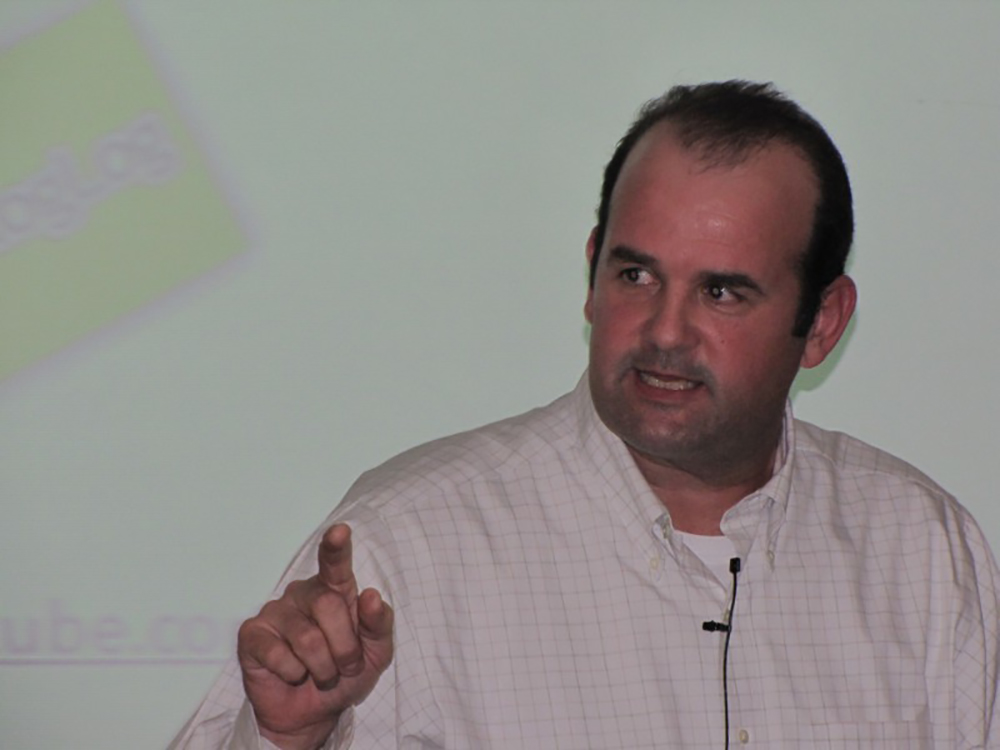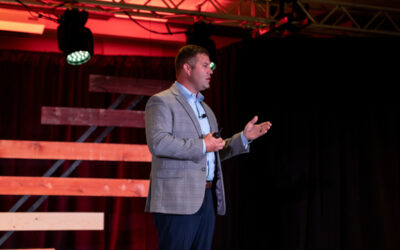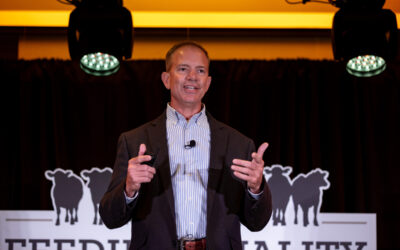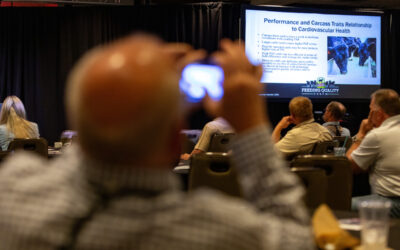
Seek answers for better beef
by Miranda Reiman
If you’ve ever tossed leftovers or overripe fruit without considering tomorrow’s lunch or creative baking, you’re part of the problem.
“We throw away 242 pounds of food per person per year,” said Brad Morgan, senior food safety and production efficiency specialist with Pfizer Animal Health.
That’s about 1,400 calories per person per day, and roughly 1.3 billion tons of food per year.
Morgan shared these facts at this year’s Feeding Quality Forum in Grand Island, Neb., and Amarillo, Texas.
“We spend about 7% of our disposable income to feed our families,” he said. “In Europe they spend anywhere from 13% to 28% of their income. What am I getting at? One, we take food for granted. Two, it’s cheap. And three, we always expect it to be there.”
But many have heard the stats pointing to the need to feed 9 to 10 billion people by 2050. That’ll take more technology for certain, he said, but also, “We’ve got to become less wasteful.”
That goes for every step of the chain, from harvest to distribution to the consumer level.
“In World War I, they talked about food as a weapon. Don’t waste it. Buy it wisely,” he said, “World War II they said it again. Rationing, grow your victory gardens, do your part.”

As prices escalate, the conversation turns in that direction again.
“Whenever we have times like this, I think it forces us to do things we never would have done before,” Morgan said.
Other countries provide examples. In South Korea, they charge citizens for food waste disposal. During the first year of implementation they cut food waste by 20%, or $4.3 billion worth.
Some European grocery stories have changed from “buy one get one free” marketing to “buy one now, get one free—later.” During a shopper’s return visit to the store, they can pick up the free item so it doesn’t go bad in the meantime.
Reducing waste is one part of the global food supply equation. “It’s just the right thing to do,” Morgan said. The other variable is increasing production, which requires new innovations. But Morgan cautioned that it can’t be at the expense of consumer satisfaction.
In this country, shoppers still have the luxury of being discerning.
“People buy beef for a reason, and it’s not because it’s cheap,” he said. “They buy it because they like the flavor of it.”
Technology that makes animals “stronger, faster, more efficient,” needs be used judiciously.
“There has got to be a balancing act, because it doesn’t matter how cheap or efficient it is to get it there if people don’t want to buy it,” Morgan said.
The seventh annual meetings were co-sponsored by Pfizer Animal Health, Purina Land O’ Lakes, Certified Angus Beef LLC (CAB) and Feedlot Magazine. For more information or event proceedings, visit www.cabcattle.com.
You may also like
Consumer Demand, Power of Quality
Demand for high-quality beef persists. But with that demand comes challenges. From tight cattle supplies to higher costs and increasing pressure on retailers to deliver a consistent eating experience, the pressure is on. David O’Diam, CAB VP of retail, addressed the current retail beef environment, highlighting both opportunities and challenges in today’s marketplace.
Data-Driven Progress and Partnerships
Discussions at Feeding Quality Forum reaffirmed the industry’s commitment to quality, transparency and innovation. With record Prime rates and strong consumer demand, producers who invest in genetics, health and relationships are positioned to drive progress and capture premiums.
Better Cattle Bring Opportunity
Cattle keep getting better, but that doesn’t mean producers should slow down progress. That’s what attendees took home from the 2025 Feeding Quality Forum. It’s call to action for the entire beef industry. Better cattle, yet new and old challenges for each segment.



